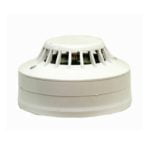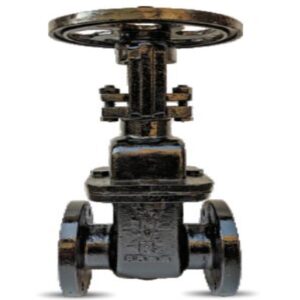Your list is empty, add products to the list to send a request
How Long Do Gas Detectors Last?

02
Aug
Gas detectors are one of the most essential yet overlooked safety devices in homes and businesses. Whether you’re using LPG in your kitchen, PNG through pipelines, or CNG in commercial settings, gas leak detection plays a critical role in preventing fires, explosions, and exposure to harmful gases.
But here’s something most people forget to ask: How long do gas detectors actually last?
Just like any electronic device, gas detectors don’t last forever. In this guide, you’ll learn about the average lifespan of gas detectors, what affects their longevity, how to maintain them, and why the True Safe gas leak detector is built for long-term reliability.
What Is the Average Lifespan of a Gas Detector?
The typical lifespan of most residential gas detectors is 3 to 5 years, depending on the model, sensor type, and environmental conditions.
Lifespan Based on Sensor Type:
- Semiconductor Sensors: Usually last around 3–5 years.
- Electrochemical Sensors: Last up to 2–3 years.
- Infrared Sensors: Found in higher-end industrial models and can last 5–10 years.
The True Safe gas leak detector falls in the 3–5 year range, offering consistent performance for Indian residential environments.
What Factors Affect the Life of a Gas Detector?
Several key factors determine how long your gas detector will work effectively:
1. Environmental Conditions
- Dust, humidity, and temperature fluctuations can degrade the sensors.
- Kitchens with high oil vapour or poor ventilation reduce detector lifespan.
2. Sensor Type
- Cheaper sensors may lose sensitivity quicker.
- The True Safe gas leak detector uses advanced sensors that offer durable performance under typical Indian conditions.
3. Power Source
- Battery-operated detectors may have shorter lives compared to those powered by electricity.
- Frequent power interruptions can also affect electronics.
4. Maintenance and Testing
- Regular cleaning and monthly testing can extend the working life.
- Ignoring alarms, dust build-up, or not checking faults may shorten the device’s life.
How to Maintain Your True Safe Gas Leak Detector
Routine maintenance can help keep your gas detector reliable and extend its life:
- Clean the vents regularly with a dry cloth.
- Test the device monthly using the built-in test/reset button.
- Check the LED indicators for any fault signals.
- Avoid placing near heat sources, fans, or open windows.
Keep the user manual handy and set a reminder to check the device every 30 days.
When Should You Replace a Gas Detector?
Even with maintenance, gas detectors have a finite life. You should replace your gas detector when:
- It is older than 5 years.
- You notice frequent false alarms or no alarm when tested.
- The LED indicators show a persistent fault or error signal.
- The alarm is no longer loud or fails the test button check.
With the True Safe gas leak detector, you’ll typically get 3–5 years of worry-free performance. It also includes visual indicators to notify you when the device is malfunctioning.
How Many Gases Can a Detector Identify?
A gas detector’s ability to identify multiple gases depends on its design.
The True Safe gas leak detector can detect:
- LPG (Liquefied Petroleum Gas)
- PNG (Piped Natural Gas)
- CNG (Compressed Natural Gas)
These are the most commonly used domestic fuels in India. While industrial gas detectors may detect carbon monoxide, methane, or ammonia, household models are usually tailored to detect flammable gas leaks that are most relevant to home environments.
Key Features of the True Safe Gas Leak Detector
- Detects LPG, PNG, and CNG
- Powered with microprocessor-based technology for better accuracy
- Features a loud 85 dB alarm
- Easy wall-mount installation
- LED indicators for power, fault, and gas detection
- Long-lasting and low maintenance
Where Should You Place Your Detector?
Correct placement impacts both detection speed and device lifespan:
- For LPG (heavier than air): Install about 30 cm above the floor.
- For PNG or CNG (lighter than air): Install about 30 cm below the ceiling.
- Avoid placing it in humid areas or near exhaust fans, windows, or air vents.
Proper placement extends the life of the unit and reduces false alarms.
Frequently Asked Questions
1. How many gases can a gas detector detect?
It depends on the model. Residential gas detectors like the True Safe gas leak detector are designed to detect LPG, PNG, and CNG. Industrial models may detect up to 4 or 5 different gases, including carbon monoxide and hydrogen sulphide.
2. How often should gas detectors be replaced?
Most gas detectors should be replaced every 3 to 5 years. It’s best to follow the manufacturer’s guidelines. Check for signs like reduced alarm volume, persistent error lights, or failed tests to know when to replace.
3. When must gas detectors be serviced?
You should test your gas detector monthly, clean it every few months, and get it professionally checked at least once a year. If the device is placed in a dusty or oily environment like a kitchen, consider cleaning more frequently.
Final Thoughts
Gas detectors might not be flashy gadgets, but they quietly protect lives. The truth is, even the best gas leak detector won’t last forever. Like smoke alarms or fire extinguishers, they require regular checks, cleaning, and timely replacement.
The True Safe gas leak detector is an affordable, reliable option tailored to Indian homes. It lasts up to 5 years, detects common household gases, and alerts you the moment danger is near. Visit us
Ready to upgrade your home’s safety?
Get the True Safe gas leak detector from Fire Supplies and protect your home and loved ones for years to come.
Stay safe. Stay alert. Stay protected.



























